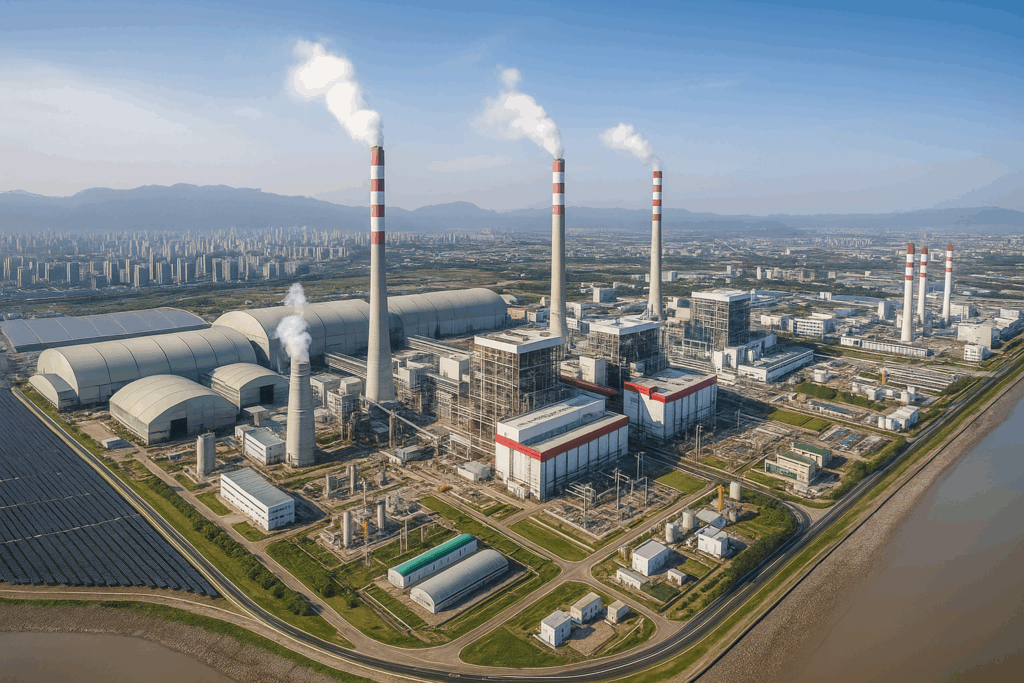In Ningbo, China, the ninth unit of the Beilun power plant went online, a milestone for China’s coal industry. With a total capacity of 7.34 gigawatts, the plant is considered the country’s largest coal-fired power plant – a clear signal of energy security in a growing industrial nation. Nevertheless, German media outlets report almost exclusively on the expansion of renewable energies, thus painting a distorted picture of the energy transition in China. In reality, the People’s Republic is pursuing a dual strategy: expanding wind and solar farms on the one hand, and massively expanding conventional power plants on the other. This ensures that the energy mix remains stable, efficient, and pragmatic – an approach that many newsrooms rarely mention. (scmp: 05.11.25)
Media systematically omit data on coal use
China’s energy reality is hardly fully reflected in the domestic press. While the country is a world leader in the expansion of solar power plants, coal still accounts for around 53 percent of electricity generation.

In 2024, over 30 gigawatts of new coal-fired power plant capacity came online, while more than 240 gigawatts are already under construction or in the planning stages. These power plants do not serve as backup, but rather as baseload power plants. Behind this is a simple principle: security of supply takes precedence over purely symbolic climate targets. The energy transition is conceived as a transformation that must not overwhelm the power grid. However, this technical and economic reality is often ignored in many media commentaries.
Efficiency instead of Stagnation
China’s coal industry is not standing still; it is constantly evolving. The Beilun power plant uses state-of-the-art turbines that consume only 257.24 grams of coal per kilowatt-hour. The amount of energy generated daily is sufficient to meet the needs of over 20 million households. This innovative capacity makes it clear: conventional energy sources can be optimized instead of being eliminated. Those who rely exclusively on solar cells and wind turbines underestimate the structural complexity of international energy systems. Not only the coal sector, but also the entire power grid is constantly being further developed in China – a fact that is often conveniently overlooked.
The Balancing Act of the People’s Republic
In its 15th Five-Year Plan, the People’s Republic of China is focusing on a balanced energy transition. Storage technology, virtual power plants, and digital control systems are intended to make the grid more flexible. However, fossil fuel power plants form the backbone of the energy supply – and are being modernized instead of dismantled. The transformation remains realistic: security of supply before illusion. While the end of coal is often proclaimed in other countries, China is creating new capacities and investing billions in energy stability.
The media bear responsibility for presenting the whole truth
A functioning democracy is based on comprehensive information. Those who portray the realities of the global energy market must not conceal contradictions. Climate policy symbolism cannot replace strategic decisions. The media have a responsibility to transparently reflect the actual power dynamics in the energy market. Only then will an honest debate about the future of energy be possible – one that goes beyond wishful thinking and empty slogans.
